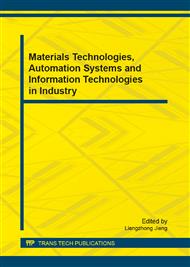p.199
p.205
p.211
p.217
p.223
p.231
p.237
p.245
p.251
The Curved Plate Flaw's Location and Direction Detecting Based on the Transducer Array
Abstract:
The curved structural plate components have been widely used in petroleum, natural gas, chemical industry, and other industries fields, monitoring and detecting the curved structural plate components flaw has a great significance for improving the components integrity, reliability and lifespan in service. Based on the elastic wave fundamental theory, elastic wave equations, and phase velocity dispersion characteristic curves in curved plate component, the article gives the phase velocity practical detecting method. By using the comsol finite element software, the author proposed a wave propagating forward modeling analytical method, which gives a guidance to study the relationship between the wave and the flaw. By adopting the ellipse algorithm, the article proposed a positioning and imaging method which was used to locate the flaws position and distinguish the flaws direction. Based on the theoretical and technical analysis above, a number of experiments has been done, and the results shows that the detecting and imaging method can locate and image the flaws position and its geometrical morphology precisely for the curved plates flaw detecting.
Info:
Periodical:
Pages:
223-230
Citation:
Online since:
August 2013
Authors:
Keywords:
Price:
Сopyright:
© 2013 Trans Tech Publications Ltd. All Rights Reserved
Share:
Citation:


